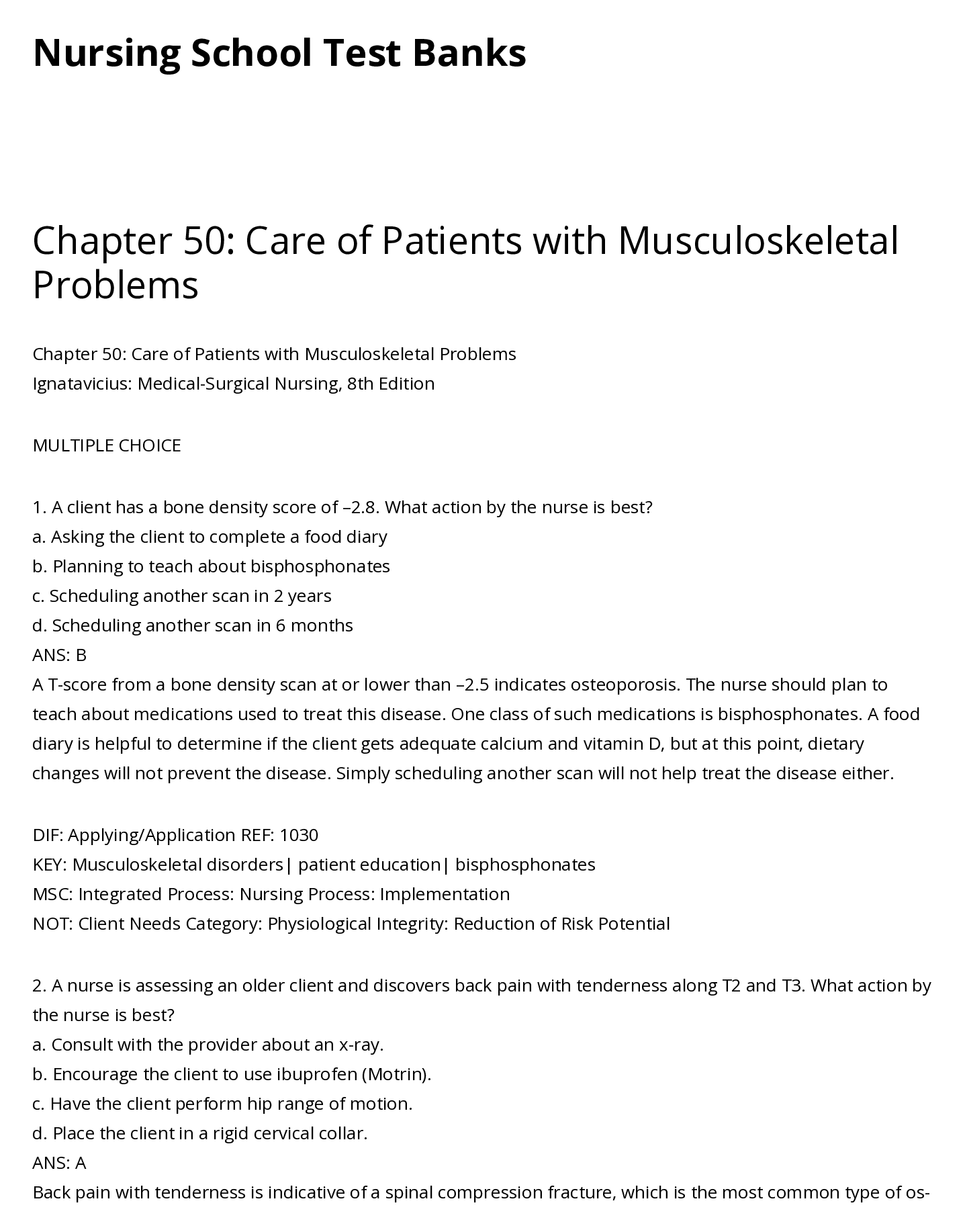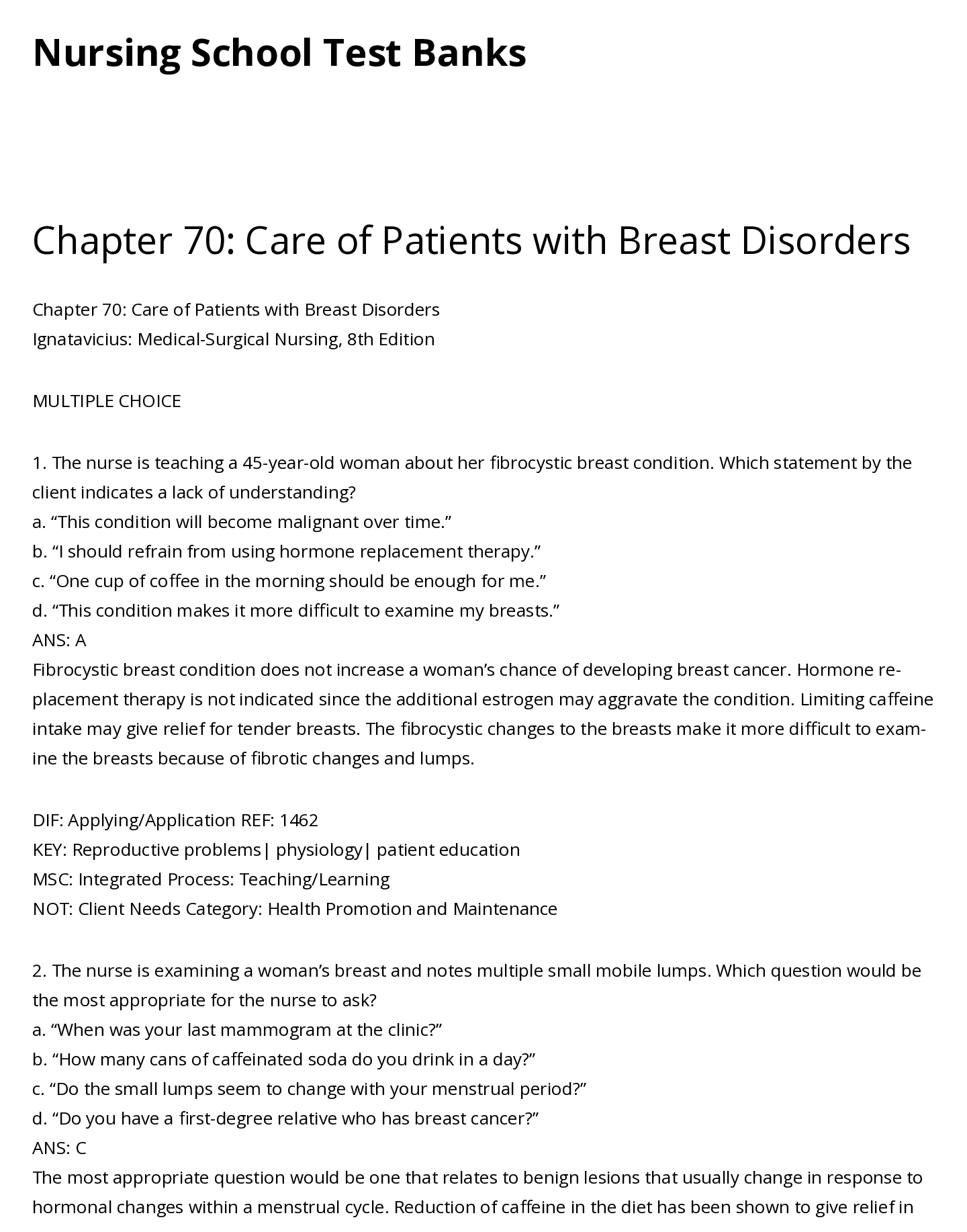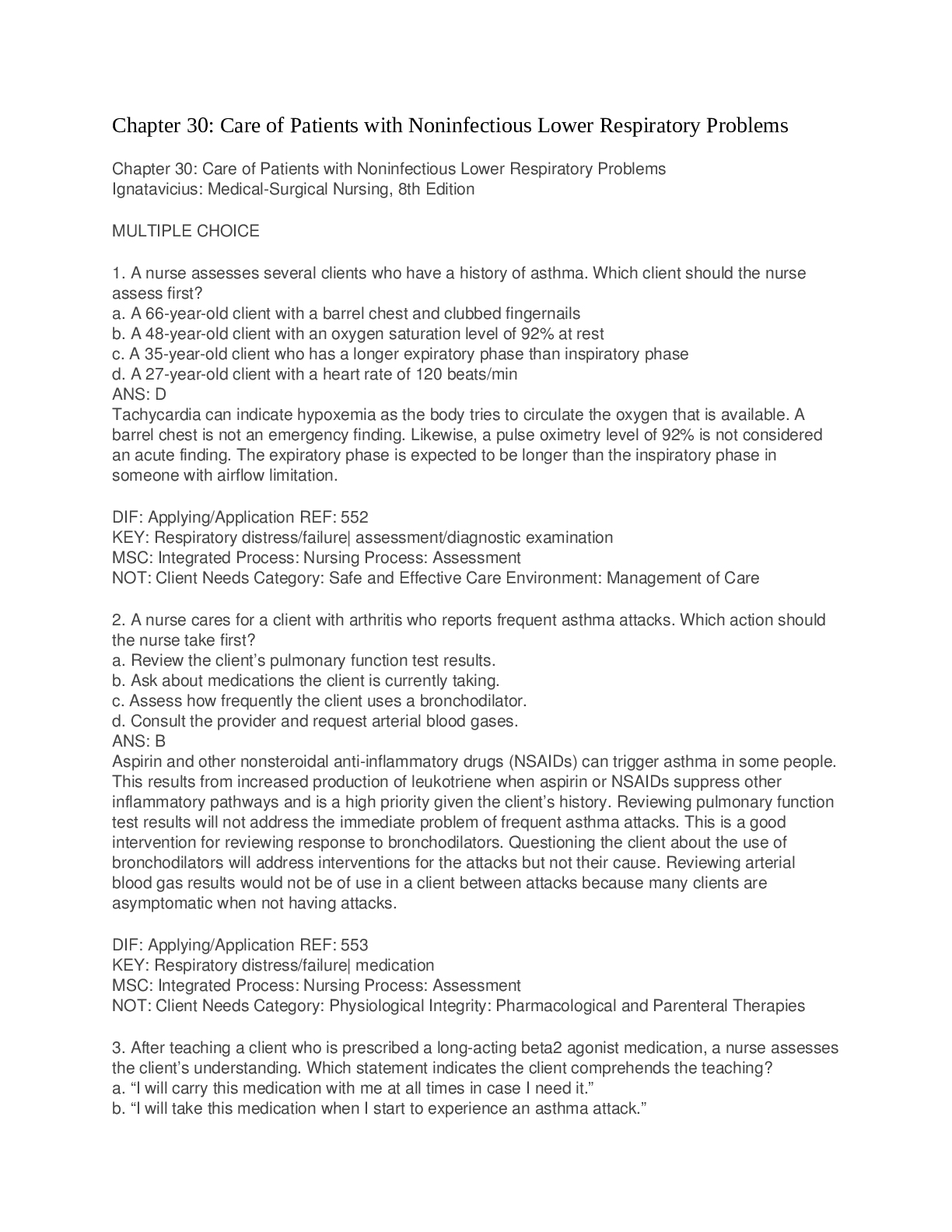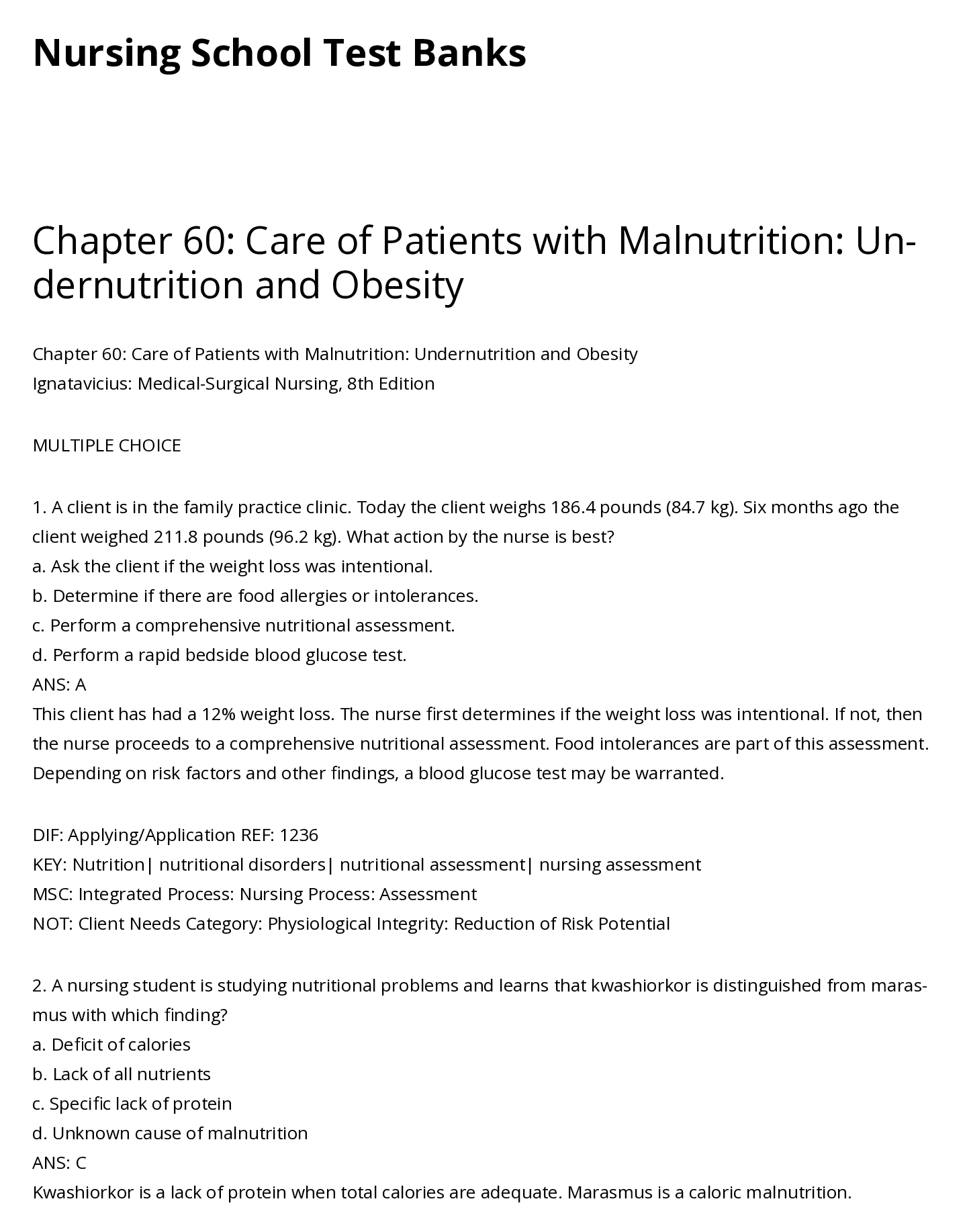*NURSING > QUESTIONS & ANSWERS > Milestone Chapter 11: Assessment and Care of Patients with Fluid and Electrolyte Imbalances (Concept (All)
Milestone Chapter 11: Assessment and Care of Patients with Fluid and Electrolyte Imbalances (Concepts for Interprofessional Collaborative Care College Test Bank)
Document Content and Description Below
Chapter 11: Assessment and Care of Patients with Fluid and Electrolyte Imbalances Ignatavicius: Medical-Surgical Nursing, 8th Edition MULTIPLE CHOICE 1. A nurse teaches clients at a community cent... er about risks for dehydration. Which client is at greatest risk for dehydration? a. A 36-year-old who is prescribed long-term steroid therapy b. A 55-year-old receiving hypertonic intravenous fluids c. A 76-year-old who is cognitively impaired d. An 83-year-old with congestive heart failure ANS: C Older adults, because they have less total body water than younger adults, are at greater risk for development of dehydration. Anyone who is cognitively impaired and cannot obtain fluids independently or cannot make his or her need for fluids known is at high risk for dehydration. DIF: Understanding/Comprehension REF: 156 KEY: Hydration MSC: Integrated Process: Nursing Process: Assessment NOT: Client Needs Category: Physiological Integrity: Basic Care and Comfort 2. A nurse is caring for a client who exhibits dehydration-induced confusion. Which intervention should the nurse implement first? a. Measure intake and output every 4 hours. b. Apply oxygen by mask or nasal cannula. c. Increase the IV flow rate to 250 mL/hr. d. Place the client in a high-Fowler’s position. ANS: B Dehydration most frequently leads to poor cerebral perfusion and cerebral hypoxia, causing confusion. Applying oxygen can reduce confusion, even if perfusion is still less than optimal. Increasing the IV flow rate would increase perfusion. However, depending on the degree of dehydration, rehydrating the client too rapidly with IV fluids can lead to cerebral edema. Measuring intake and output and placing the client in a high-Fowler’s position will not address the client’s problem. DIF: Applying/Application REF: 156 KEY: Hydration MSC: Integrated Process: Nursing Process: Implementation NOT: Client Needs Category: Physiological Integrity: Physiological Adaptation 3. After teaching a client who is being treated for dehydration, a nurse assesses the client’s understanding. Which statement indicates the client correctly understood the teaching? a. “I must drink a quart of water or other liquid each day.” b. “I will weigh myself each morning before I eat or drink.” c. “I will use a salt substitute when making and eating my meals.” d. “I will not drink liquids after 6 PM so I won’t have to get up at night.” ANS: B One liter of water weighs 1 kg; therefore, a change in body weight is a good measure of excess fluid loss or fluid retention. Weight loss greater than 0.5 lb daily is indicative of excessive fluid loss. The other statements are not indicative of practices that will prevent dehydration. DIF: Analyzing/Analysis REF: 156 KEY: Hydration MSC: Integrated Process: Teaching/Learning NOT: Client Needs Category: Health Promotion and Maintenance 4. A nurse assesses a client who is prescribed a medication that inhibits angiotensin I from converting into angiotensin II (angiotensin-converting enzyme [ACE] inhibitor). For which expected therapeutic effect should the nurse assess? a. Blood pressure decrease from 180/72 mm Hg to 144/50 mm Hg b. Daily weight increase from 55 kg to 57 kg c. Heart rate decrease from 100 beats/min to 82 beats/min d. Respiratory rate increase from 12 breaths/min to 15 breaths/min ANS: A ACE inhibitors will disrupt the renin–angiotensin II pathway and prevent the kidneys from reabsorbing water and sodium. The kidneys will excrete more water and sodium, decreasing the client’s blood pressure. DIF: Applying/Application REF: 166 KEY: Hydration| angiotensin-converting enzyme (ACE) inhibitor MSC: Integrated Process: Nursing Process: Evaluation NOT: Client Needs Category: Physiological Integrity: Pharmacological and Parenteral Therapies 5. A nurse is assessing clients on a medical-surgical unit. Which adult client should the nurse identify as being at greatest risk for insensible water loss? a. Client taking furosemide (Lasix) b. Anxious client who has tachypnea c. Client who is on fluid restrictions d. Client who is constipated with abdominal pain [Show More]
Last updated: 1 year ago
Preview 1 out of 10 pages
.png)
Reviews( 0 )
Document information
Connected school, study & course
About the document
Uploaded On
Dec 29, 2021
Number of pages
10
Written in
Additional information
This document has been written for:
Uploaded
Dec 29, 2021
Downloads
0
Views
54

.png)
.png)
.png)
.png)
.png)
.png)
.png)
.png)
.png)
.png)
.png)

.png)

.png)
.png)
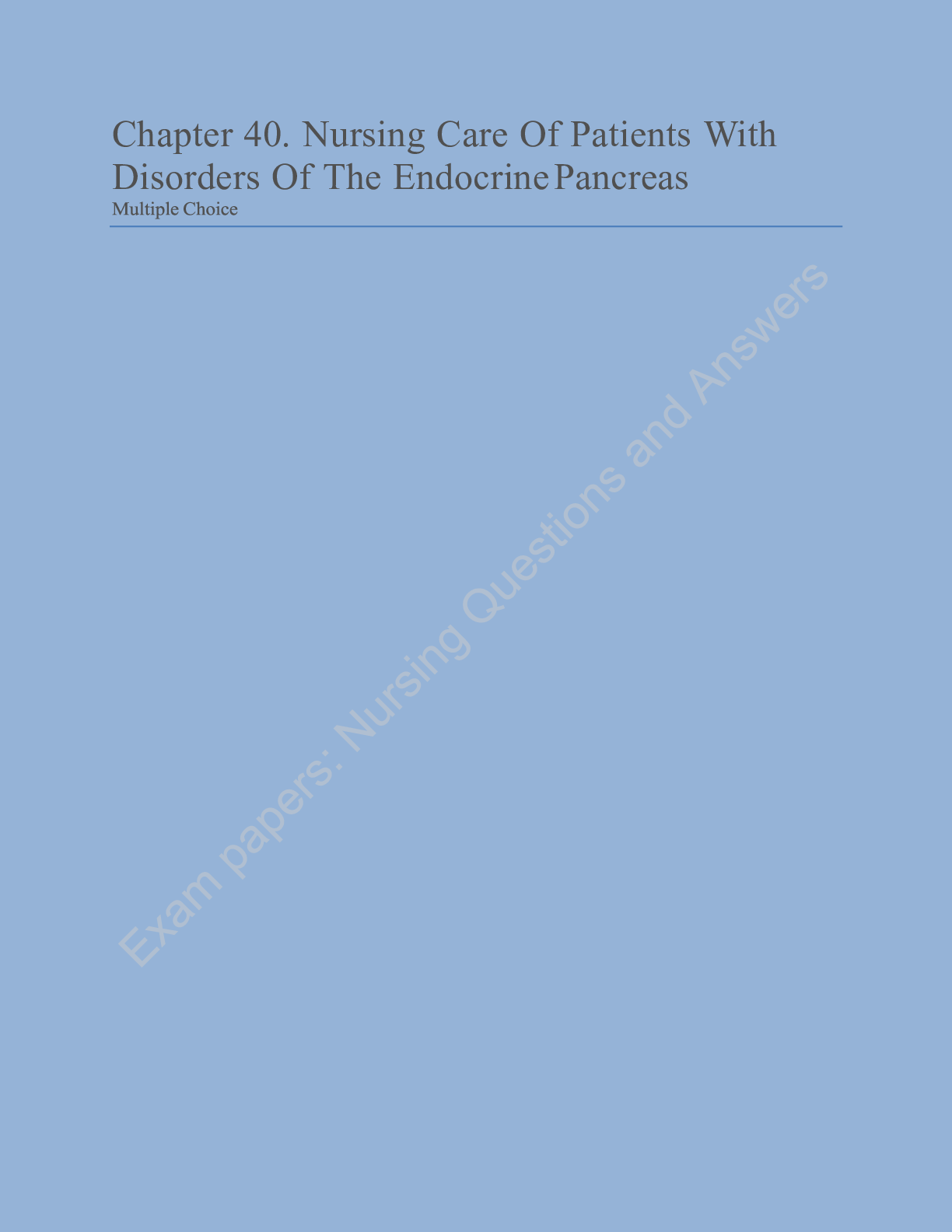

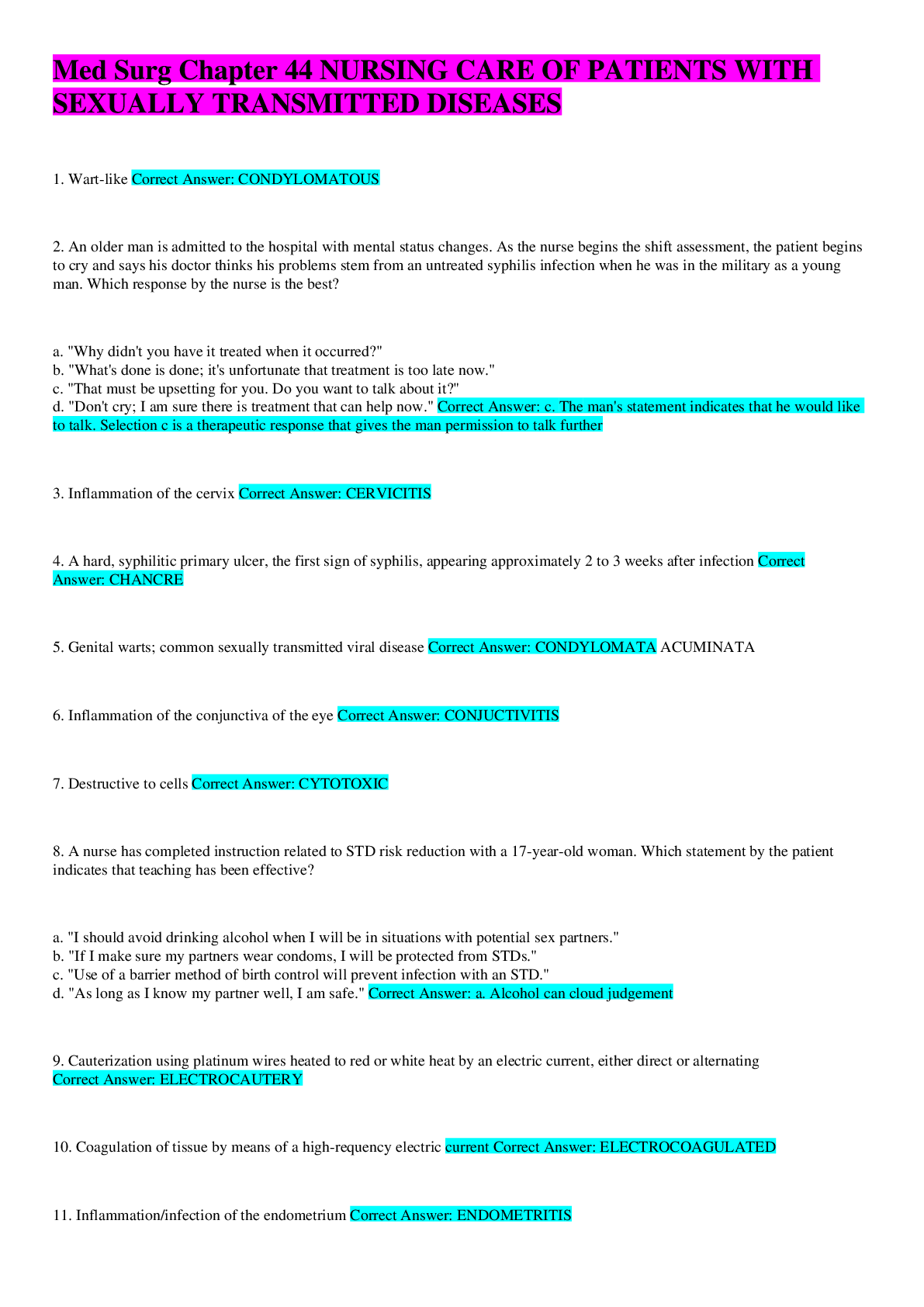
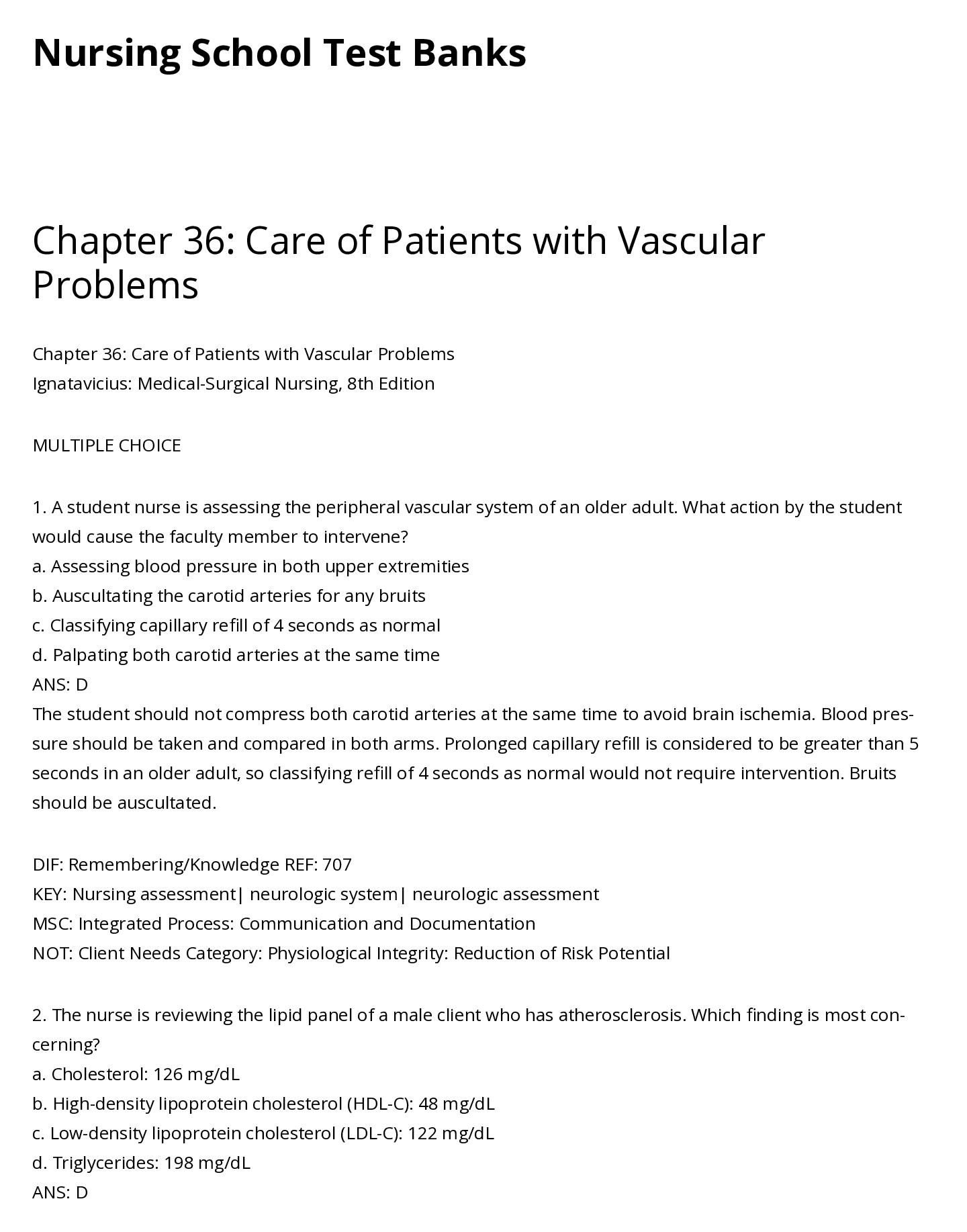
.png)

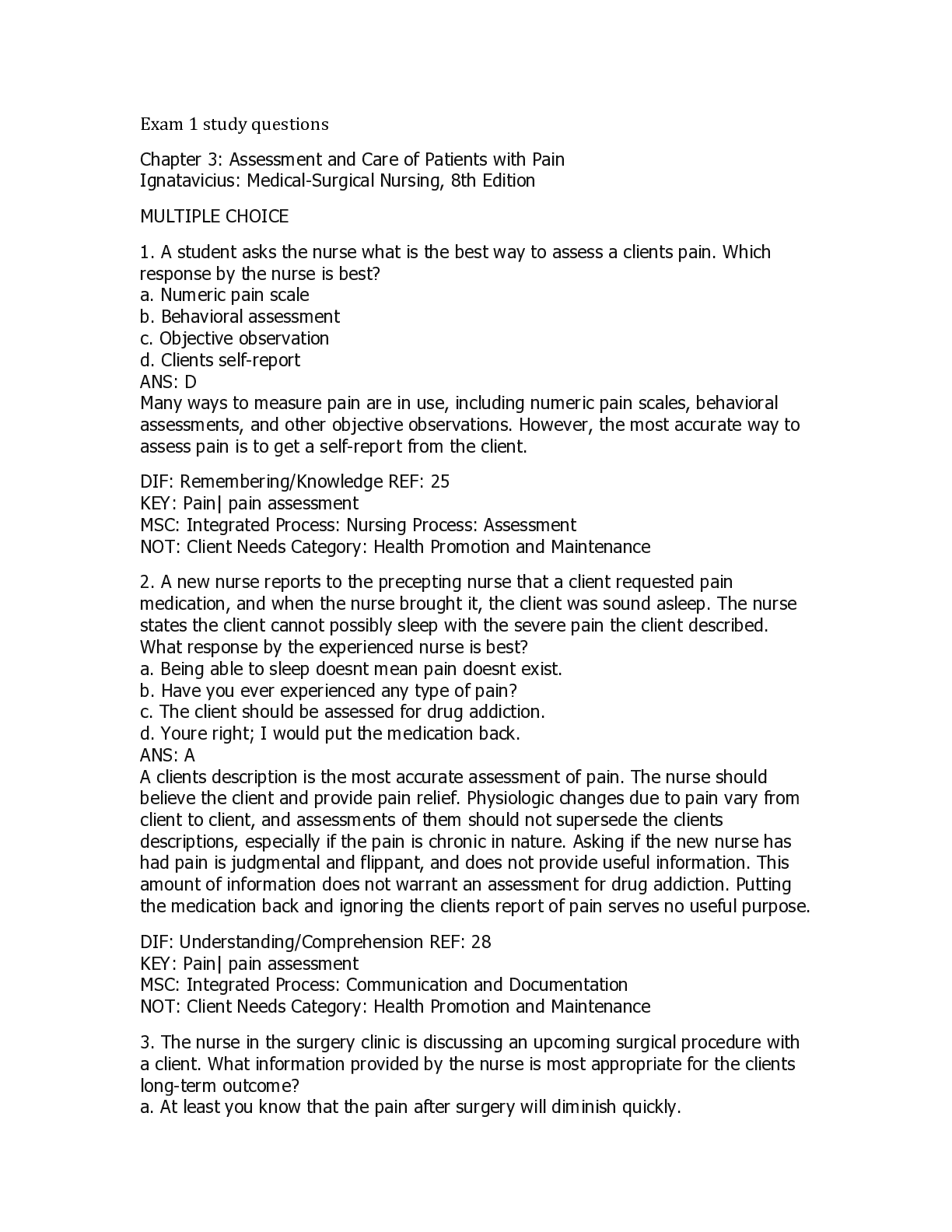

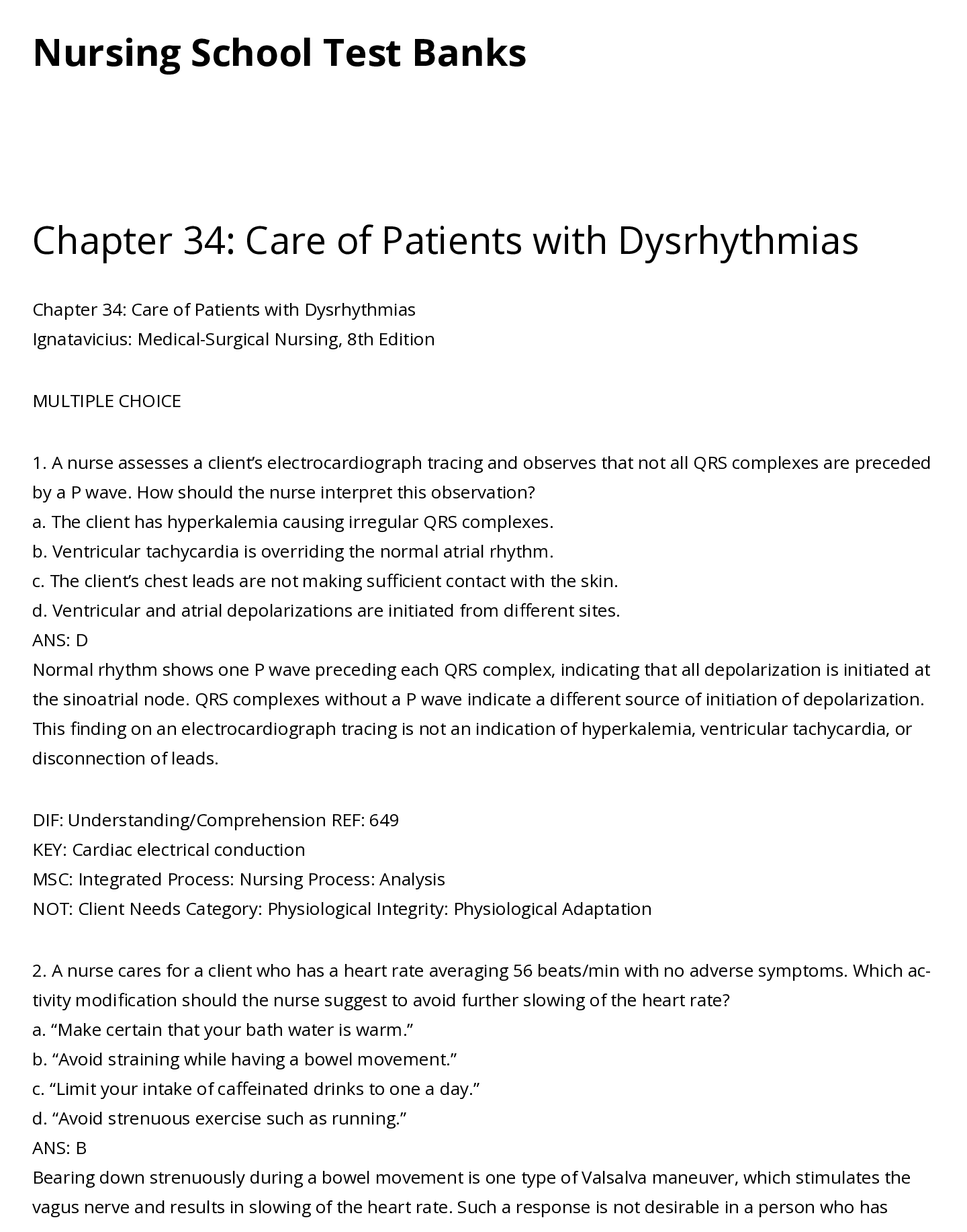

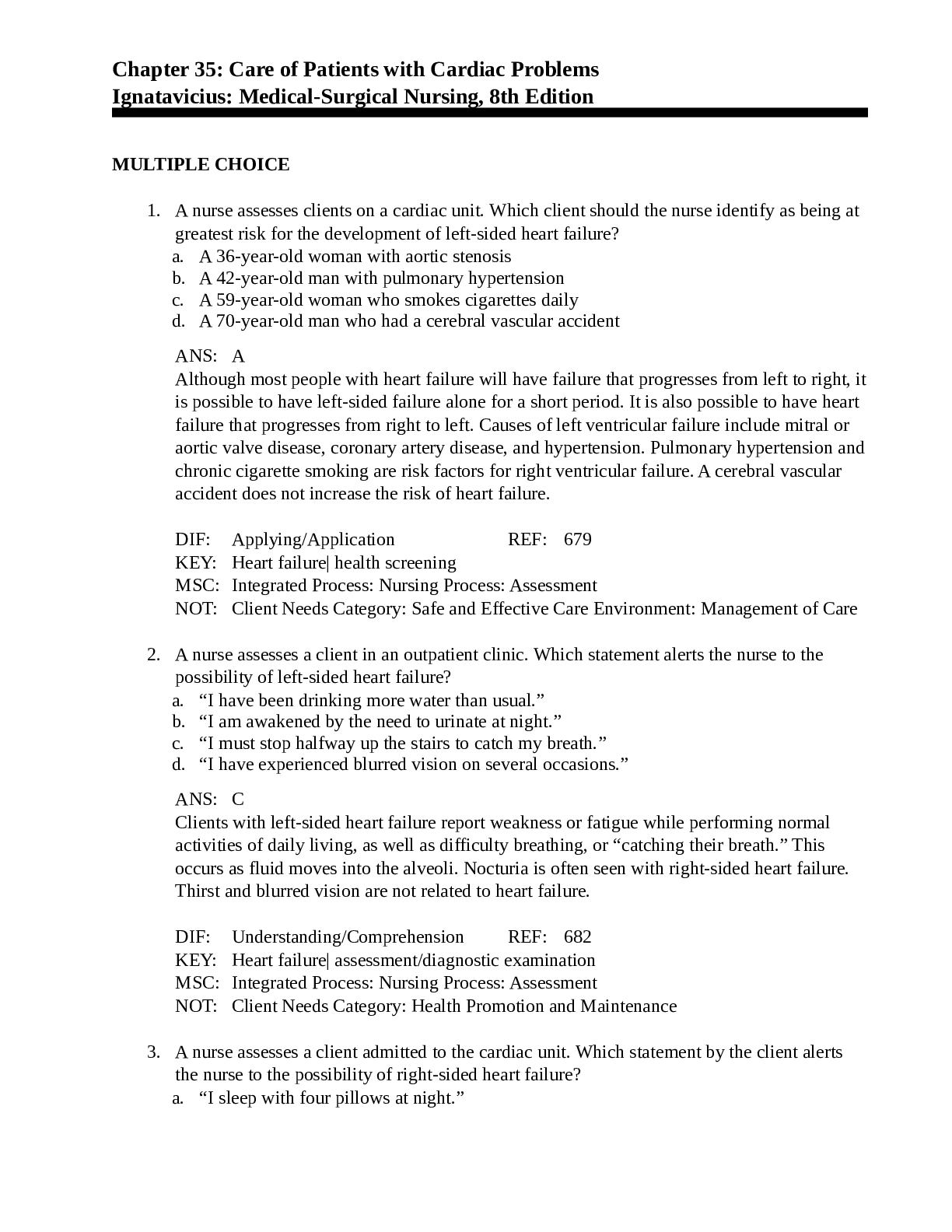


.png)
